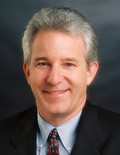Who's Endorsing Who?
When it comes time to vote, people often look to organization they trust and respect for guidance. So during campaign season, we candidates go around and talk to many organizations here in town asking for their support.
So far, I’ve been lucky. Most of the organizations who do endorse candidates have chosen to endorse me. We have yet to hear from a number of important organizations – especially the Ventura County Star, which is viewed as one of the most important endorsements. The Star did endorse me last time around.
When you try to figure out who has endorsed who, I realize that all those different signs and mailers can get confusing. A number of people have asked me how I have managed to forge alliances with all those different candidates – based on the combination of names they’ve seen on different signs and mailers. I wish! Although I have good relations with just about all the candidates, I have endorsed the other two incumbents, Christy Weir and Carl Morehouse.
All those different combinations you see on signs and in your mailers come from all the different groups who endorse candidates, not from the candidates themslelves. We’ve seen all different combinations. I’ve been paired with Christy Weir and Jerry Martin in one instance; with Jerry and Carl Morehouse in another; and with Carl and Doug Halter in yet another. The only exception here is the sign at Victoria and Telegraph. Carl, Christy, and I put that sign up ourselves.
Here are the groups who have endorsed me (that I know of!)
Ventura Citizens for Hillside Preservation
VCHP was the first group to endorse me – both in 2003 and today. I’m always grateful for their support and I am continuing to work to preserve the hillsides.
Ventura Police Officers Association
Ventura City Fire Fighters Association
Both these organizations endorsed me whole-heartedly. They both do a great job. I was proud to campaign with them last year in favor of Measure P6, the public safety funding measure. P6 didn’t get the two-thirds but it did get 62% -- more than any of us are likely to get in this election!
Service Employees International Union Local 721
SEIU represents most city employees as well as those who work for Ventura County, Gold Coast Transit, and other public agencies. I’m very grateful to SEIU because of the way the union cooperated with the City when I was first elected. We had a couple of tough budget years and SEIU agreed to take no raise in exchange for no layoffs. That got us through the hard times.
Ventura County Coastal Board of Realtors Political Action Committee
The Realtors PAC didn’t endorse me last time, but I’m pleased they decided to support me this time. I told them that I am especially proud of the city’s workforce housing program, which will provide a second mortgage for city employees seeking to buy a house. I’m also proud of the fact that we will be expanding this program beyond city employees, working with other large employers such as Community Memorial Hospital to help their employees as well. I believe this program will help both employees and the real estate market.
Stonewall Democrats
The Stonewall Democrats are active on a variety of social justice issues, but they especially focused on gay and lesbian rights.
So far, who hasn’t endorsed me? Two groups.
Tri-Counties Central Labor Council (AFL-CIO): My interview with Tri-Counties focused mostly on Wal-Mart. I stated my position, which is that I believe we should restrict the size of retail stores on Victoria. I believe Tri-Counties wanted a stronger position against Wal-Mart and has not endorsed me.
Greater Ventura Chamber of Commerce Political Action Committee: Not only did the Chamber PAC not endorse me (or the other incumbents), they didn’t even interview us. The Chamber PAC has been critical of the incumbents for supposedly being pro-tax (because of P6) and anti-development (partly because of Wal-Mart).
In other words, one group didn’t endorse me because I’m not tough enough on Wal-Mart and the other group didn’t endorse me because I’m not easy enough on Wal-Mart. That's politics for you.
